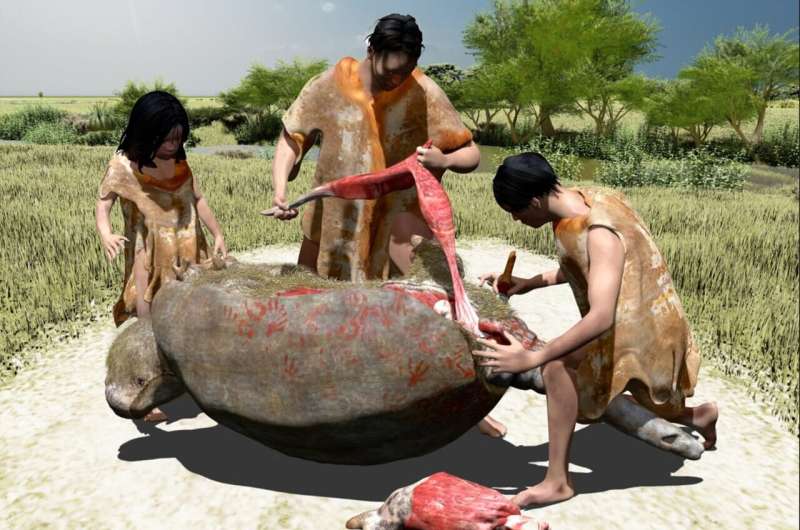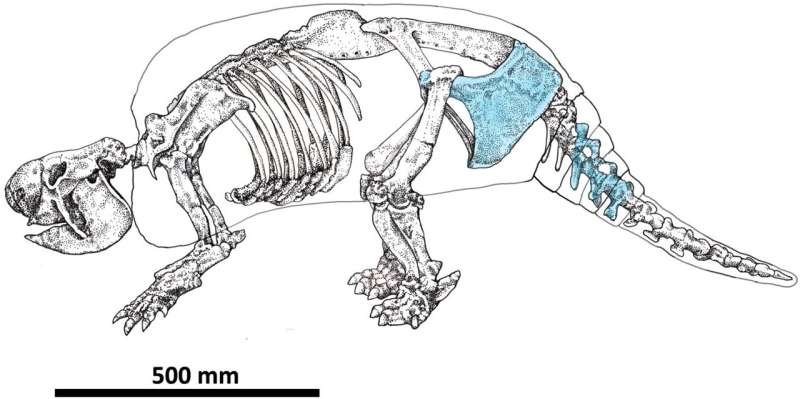This article has been reviewed according to Science X's editorial process and policies. Editors have highlighted the following attributes while ensuring the content's credibility:
fact-checked
peer-reviewed publication
trusted source
proofread
Evidence for butchery of giant armadillo-like mammals in Argentina 21,000 years ago

Cut marks on fossils could be evidence of humans exploiting large mammals in Argentina more than 20,000 years ago, according to a study published July 17, 2024 in the open-access journal PLOS ONE by Mariano Del Papa of National University of La Plata, Argentina and colleagues.
The timing of early human occupation of South America is a topic of intense debate, highly relevant to a study of early human dispersal across the Americas and of humans' potential role in the extinction of large mammals at the end of the Pleistocene Epoch. This discussion is hampered by a general scarcity of direct archaeological evidence of early human presence and human-animal interactions.
In this study, researchers present evidence of butchery on Pleistocene mammal fossils from the banks of the Reconquista River, northeast of the Pampean region in Argentina. The fossils are those of a glyptodont, a giant relative of armadillos, named Neosclerocalyptus.
Statistical analysis finds that cut marks on parts of the pelvis, tail, and body armor are consistent with known marks made by stone tools, and the placement of these marks is consistent with a butchering sequence targeting areas of dense flesh. Radiocarbon dating indicates these fossils are around 21,000 years old, nearly 6,000 years older than other known archaeological evidence in southern South America.

These results fit with other recent findings that indicate early human presence in the Americas over 20,000 years ago. These fossils are also among the oldest evidence of human interaction with large mammals shortly before many of those mammals became extinct.
The authors suggest that these findings might be further supported by additional excavation at this site, further analysis of the cut marks, and more extensive radiocarbon dating of the fossils.
Miguel Delgado, the corresponding author, adds, "The study's evidence puts into question the time frame for the first human peopling of the Americas 16,000 years ago."
More information: Anthropic cut marks in extinct megafauna bones from the Pampean region (Argentina) at the last glacial maximum, PLoS ONE (2024). DOI: 10.1371/journal.pone.0304956
Journal information: PLoS ONE
Provided by Public Library of Science





















